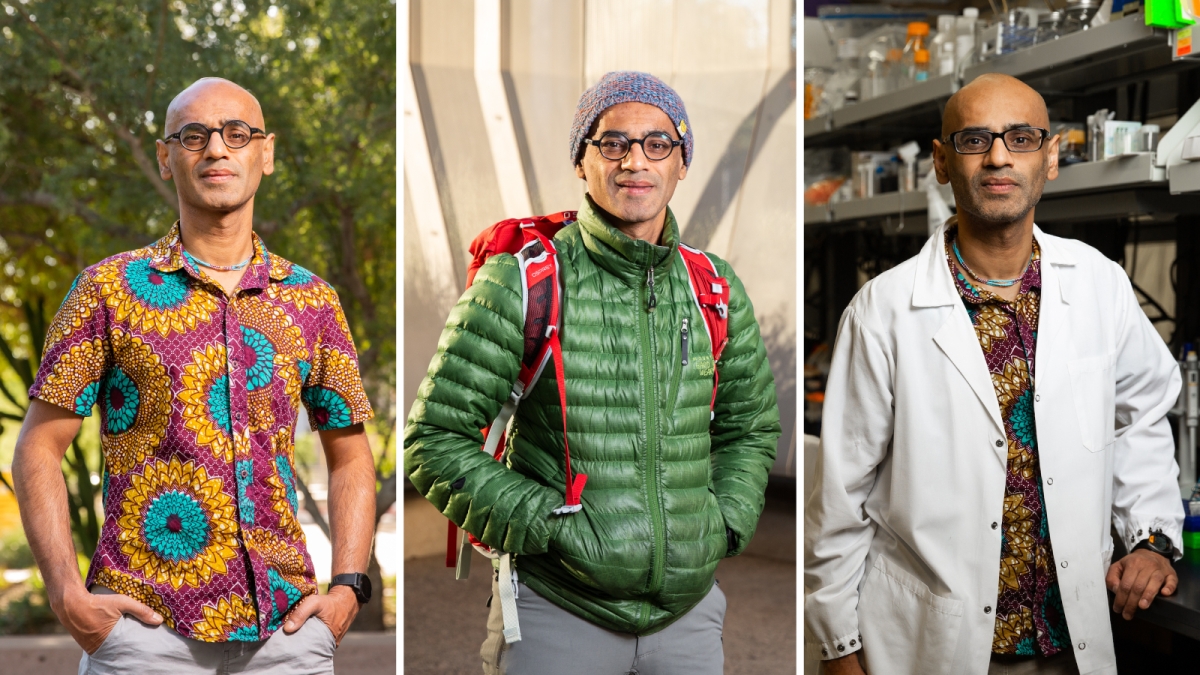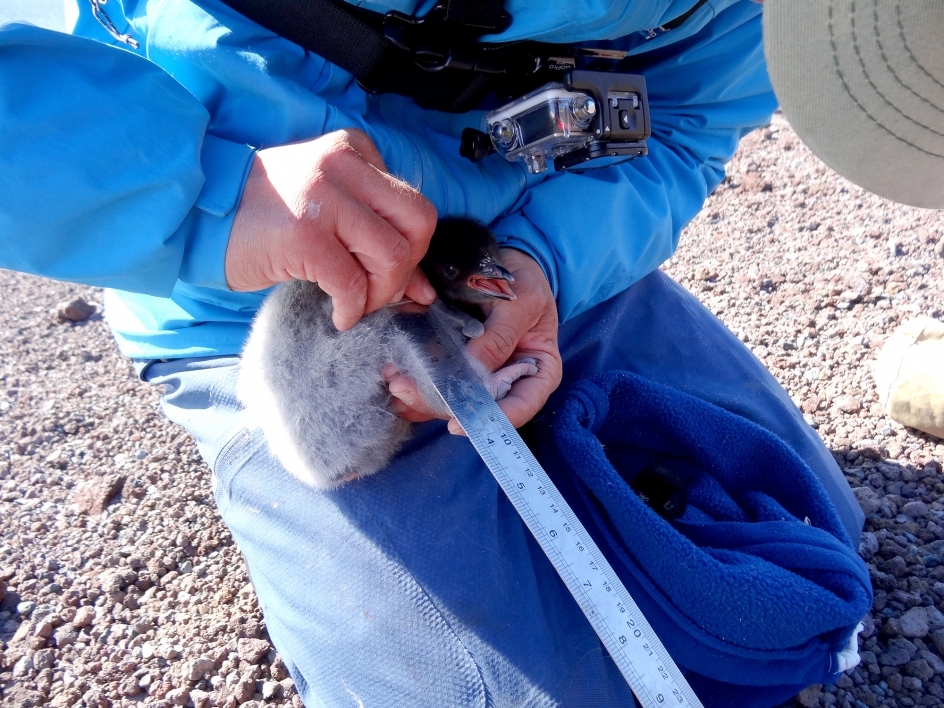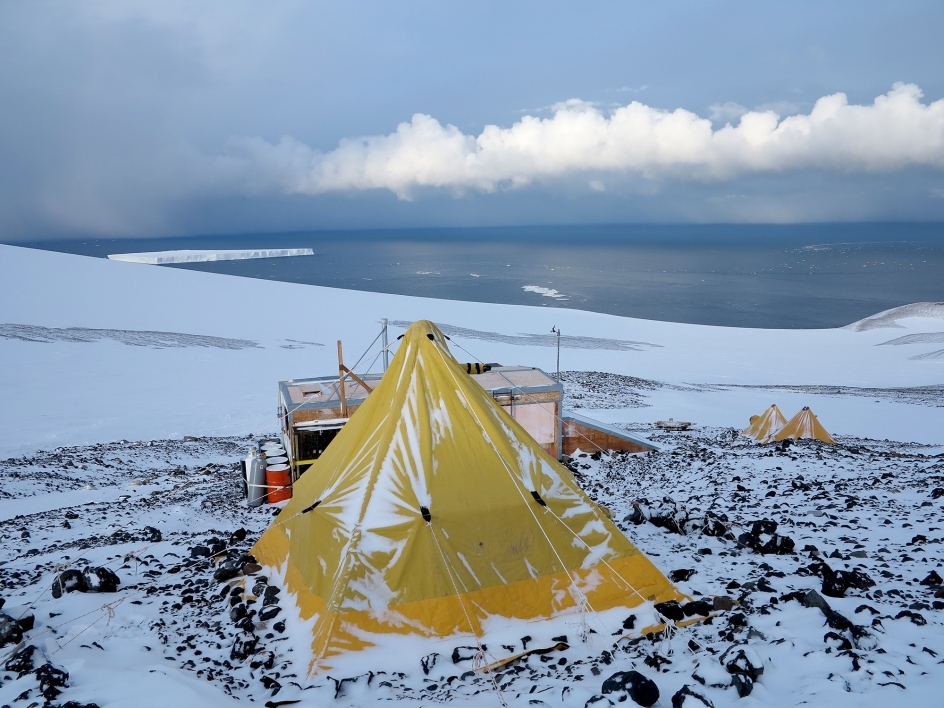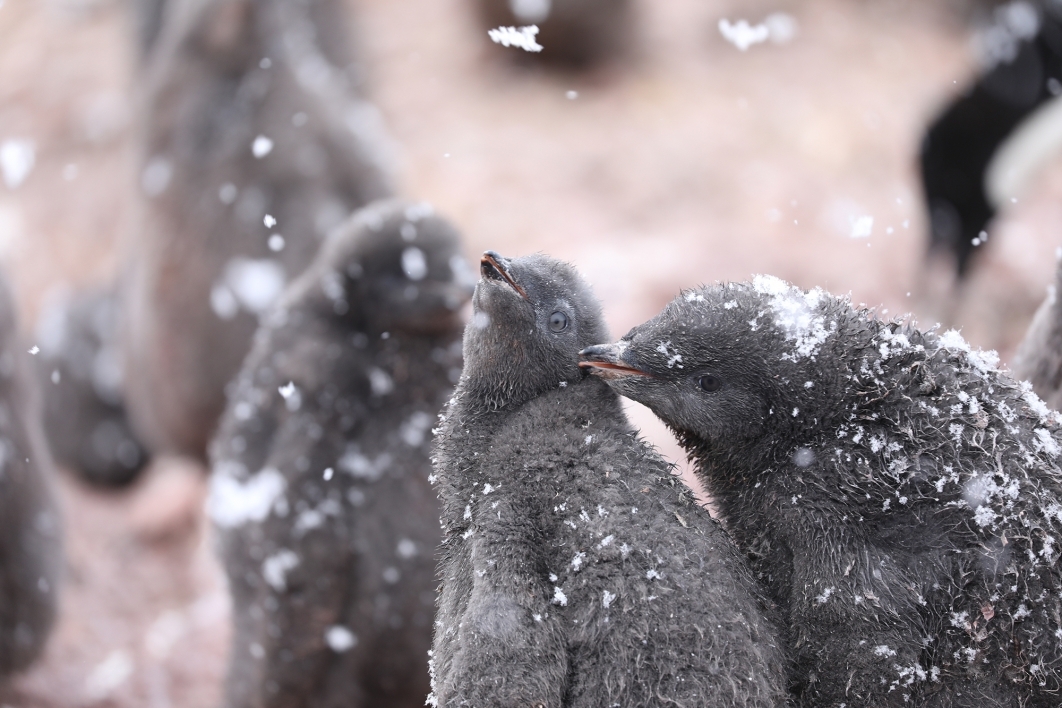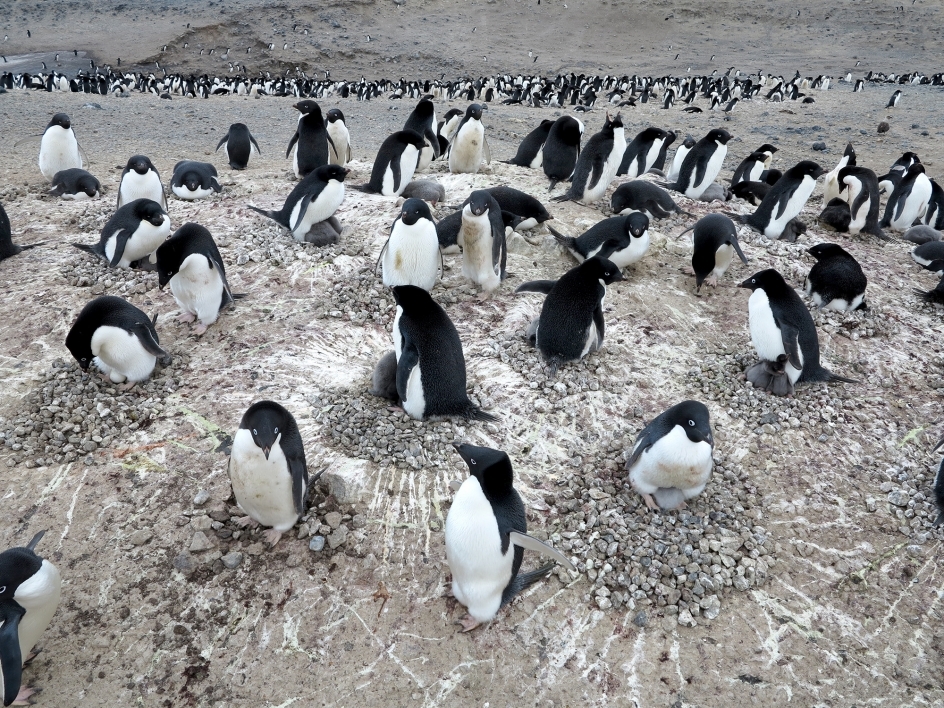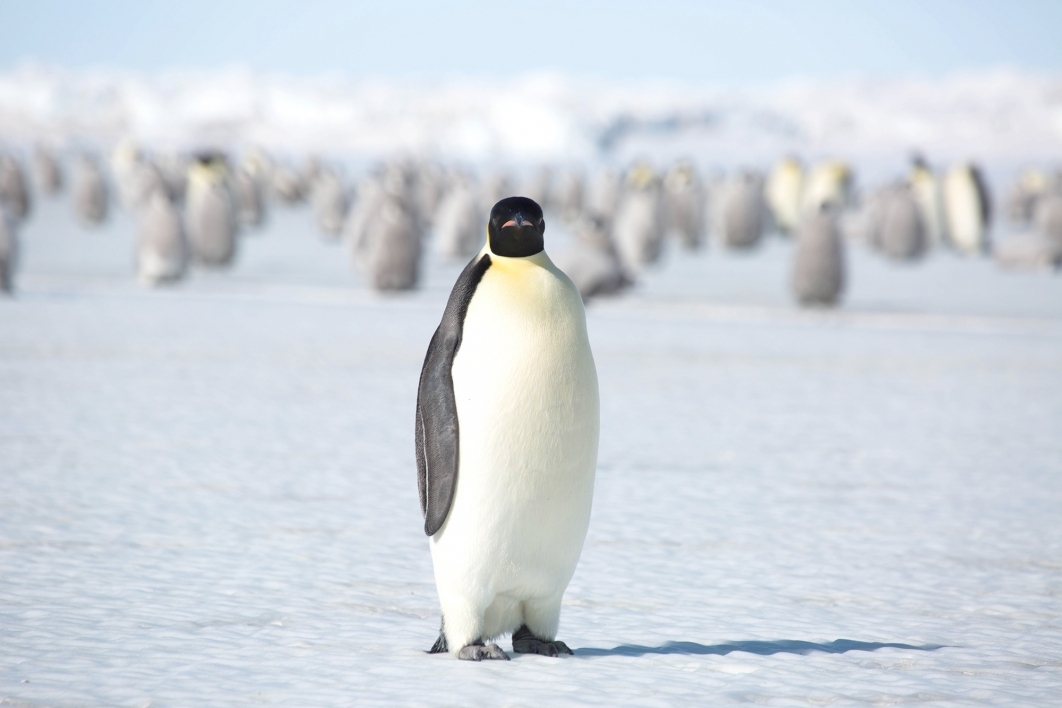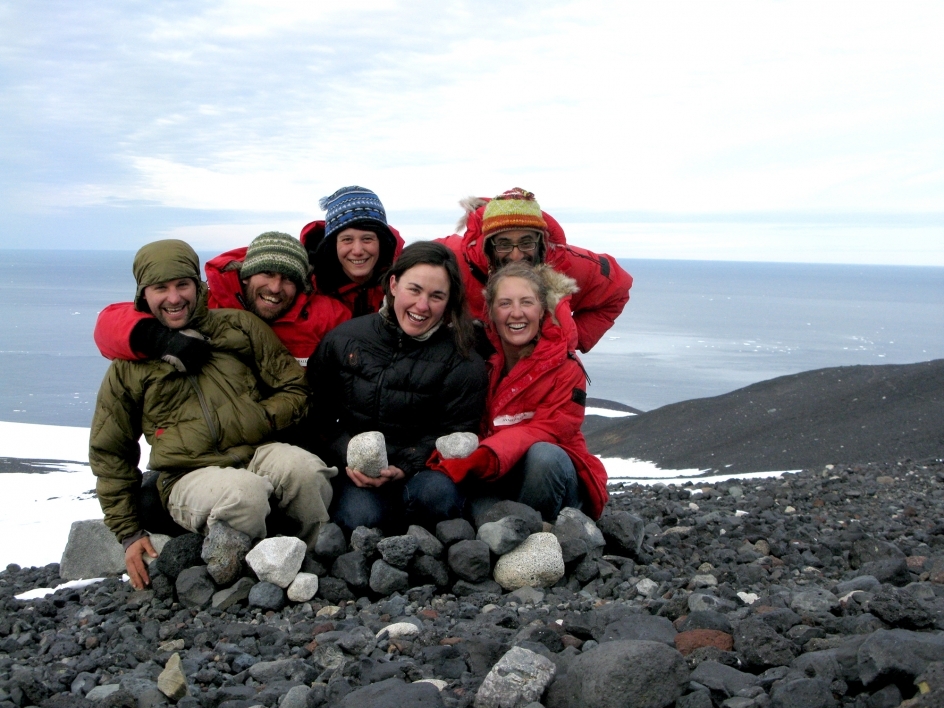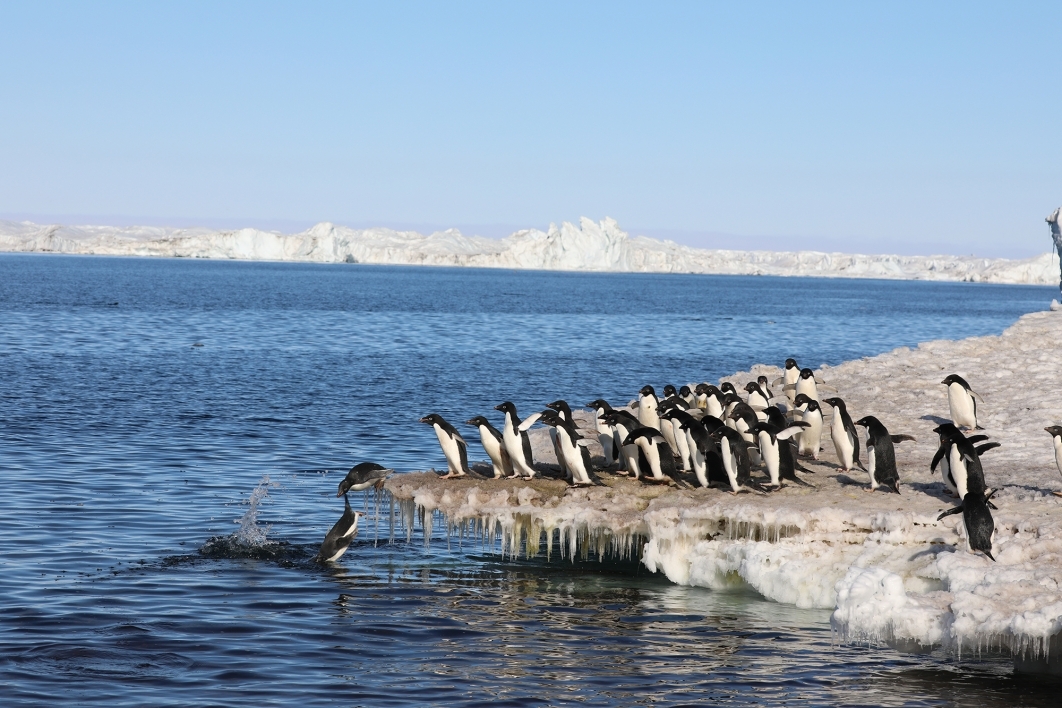When Arvind Varsani arrived in the Antarctica for the first time a decade ago, he noted that the world looked black and white — from the sheet ice to the sky to the snippets of Earth peeking out from under the snow-covered mountains. That is, with the exception of an oversized vermilion bus that ferried him and other researchers to a nearby camp. The sounds of a wind farm and heavy machinery reverberated.
“It was a very surreal experience,” Varsani recalled.
So was the spectacle of thousands of penguins gathered in nearby Cape Crozier for breeding season. Their sounds replaced the din of the camp, and so did their smell, the smell of guano, at least for a while.
“Once you’ve been there for a while, you don’t think about that smell again,” Varsani said.
“But you can’t ignore the sounds the penguins emit during breeding season. It’s a constant cacophony of calling and squeaking that can be heard from as far as a kilometer away (0.6 miles).”
The penguins try to breed in the same place every year and identify “who’s who” through their calls, Varsani explained. Penguin parents recognize their offspring by the sound of their squeaks. Afterall, the chicks look alike, a veritable sea of fluffy gray bodies waddling about.
Varsani made his first journey to Antarctica from his lab in New Zealand to find out why penguin chicks were losing their feathers. He knew of a virus, a circovirus, that similarly affected parrots. Could it be possible that a related pathogen was responsible for this disorder in penguin chicks?
A nomad gone viral
Varsani calls himself a “nomadic 'viral' scientist,” both in person and on Twitter. He also calls himself an adventurer, and with good reason. To date, he has pursued research of all kinds on all seven continents.
Born and raised in Kenya, Varsani moved to England to pursue his undergraduate studies, then he headed to South Africa to pursue his doctoral degree in molecular and cell biology. Later, he accepted a faculty position in New Zealand, making him the department’s lone virologist. Now, he calls Arizona State University home, where he’s an associate professor in the School of Life Sciences. He said that he chose ASU for its intellectual stimulation and for its respect for interdisciplinary research.
In addition to studying the aforementioned penguins, Varsani has studied cactus, maize, blueberries, geese, fish, microbiomes, good viruses, bad viruses, gila monsters, brains, bees, beetles, dolphins, seals, whiteflies, parrots, pigeons and marmots.
He encountered marmots years ago while investigating tiny viruses in their feces. He says that if you happen to be hiking in Colorado or the Pacific Northwest, you’re apt to hear chirping and whistling coming from the rocky outcrops. That whistling and chirping are the marmots who are putting up a racket to alert their neighbors of impending disaster.
“They’re pretty cute,” Varsani said. “They have a bit of an overbite. They’re like big rodents with a little bit of character. They hang out in the daisies during the spring bloom. It reminds one of being back in the ‘60s.”
Varsani acknowledges that he has a keen interest in psychology, which has had him thinking about whether and how certain viruses rewire the brain. (Yes, they do. Rabies is a classic example, he said.) He currently studies viruses in ecosystems. His research group is unique in that they don’t work on one thing at a time but in parallel with multiple projects related to virus ecology and evolutions across the spectrum, from tropics to polar regions and from plants to animals and bacteria.
Varsani attributes his diverse interests and explorations to growing up with limited resources, both as a child and as a young researcher. But it was his parents who emphasized that education was “the best thing you can ever get in life,” he said.
“When I was stationed in South Africa, a really big name in virus research came out to a conference that I had helped organize there. He said, ‘Listen, Arvind, you’re too broad in your research. You need to focus on one thing and one key question.’ But in different parts of the world, the resources aren’t there to do this.”
As an undergraduate, Varsani said he read “a lot of books about viruses,” and later worked on designing human papillomavirus vaccines with an aim to produce them cheaply in plants. Plant-infecting viruses can be used to produce a lot of these vaccines.
As a new faculty member at University of Canterbury in Christchurch, New Zealand, Varsani happily and necessarily collaborated with scientists in other fields, like zoologists, geologists, ecologists and freshwater biologists.
“Being the only virologist there meant that I had to interact with other people,” he explained. “You look at your environment and you adapt. That’s the best thing you can do. Thinking of viruses from an evolutionary angle just kicked in.”
Much like the viruses Varsani was studying, he began adapting, too.
He explained that you can’t study just one virus and apply its traits to all the other viruses out there. And there are a lot of viruses out there, on land and water. Varsani himself has identified thousands so far in his career.
It should be noted that as abundant as bacteria are, viruses have them beat. There are ten times more viruses than bacteria, and oceans are teeming with both.
And humans? “We ourselves are an ecosystem of bacteria and human cells, given what we know about our gut system,” Varsani said.
So, how much of us are viruses? “Nobody has figured that out, but it would probably be 10 times the amount as the bacteria.”
Varsani acknowledges that the notion of being composed of 90% bacteria, and who knows how many viruses, is an unsavory one. But he said that’s because of the narrow way we think about them.
Viruses doing good
“We’ve always had this negative connotation of viruses because we study them from the disease side of things,” he said. “We study diseases in things we care dearly about. But if all viruses caused disease that were fatal, then there would be no organisms living on the planet today. So, they must be doing something right.”
And indeed, they do. Varsani will be the first to tell you so. Viruses will protect bacteria by infiltrating their chromosomes. That, in turn, will alter the physiology of the outer surface of the bacteria so intruders can’t get inside the bacteria and harm them.
“There are many beautiful examples of good viruses,” Varsani said.
One of his favorite examples can be found in Wyoming’s Yellowstone National Park and involves a grass that can grow in temperatures as high as 55 degrees Celsius (131 Fahrenheit).
“What’s beautiful about that grass is that it’s infected by a fungus, and the fungus is infected by a virus,” Varsani said.
The fungus “rewires” the grass’s physiology allowing it to tolerate extreme soil temperatures often found in geyser basins.
“If you take the virus away, the fungus grows rapidly and kills the grass,” Varsani explained. “But the virus modulates the fungus’s growth, so the fungus can help the grass tolerate the high soil temperature. That is beautiful.”
When asked whether he has a favorite virus, Varsani pauses.
“Everyone asks me that. It’s kind of difficult to have a favorite virus when they’re all so unique and amazing.”
To be sure, viruses come in different forms, different sizes and different shapes. They’re beautiful and diverse.
“They constantly keep you on your toes,” he said.
Varsani described a type of virus that operates in groups of eight. That is, eight parts of the virus, which are all independent, come together to cause an infection.
“They deliver segments of the virus to different parts of the plant, and then they come together to operate as one,” Varsani explained. “You can even get into philosophical discussions about cooperation in these pathogens. What about conflict? If you have a co-infection with five different viruses, do they come together to interact with one another?”
The answer is yes, at least when it comes to HIV and the herpesviruses, Varsani said. Herpesvirus infections can suppress HIV infection and, in mice, have been shown to protect against some bacterial infections.
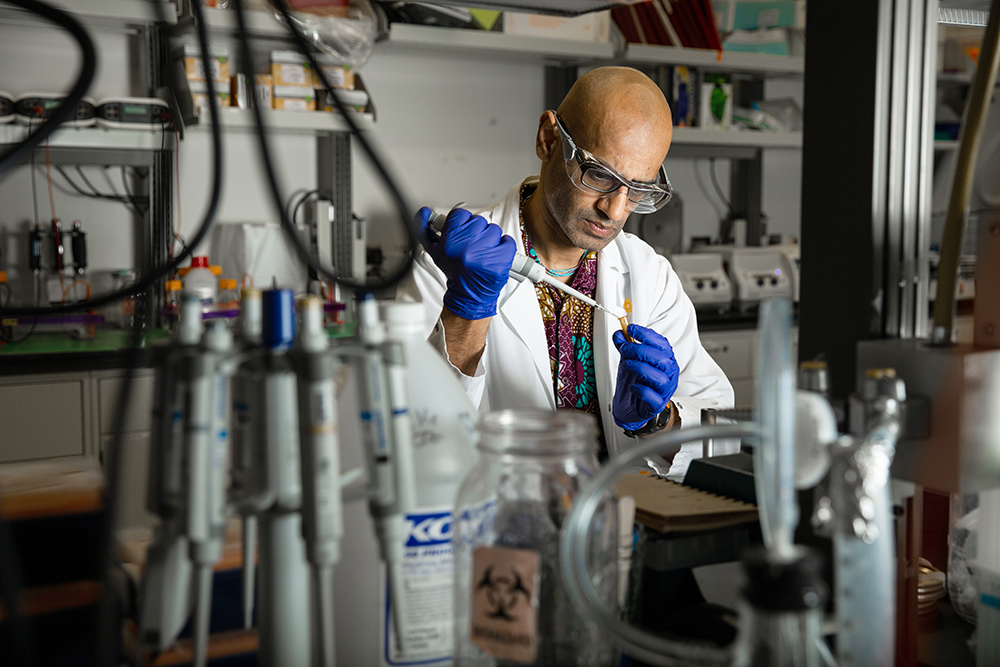
Arvind Varsani (pictured in his lab) looks foward to getting out into the field after the pandemic. In the meantime, his lab is still carrying on studying the Antarctica viruses from afar. Photo by Deanna Dent/ASU News
Viruses and a changing climate
However, when it comes to climate change and increasing levels of carbon dioxide, some viruses have been found to replicate more efficiently than normal, Varsani said. Researchers are also looking at whether insects that fare better in warmer, more carbon dioxide-rich environments will be better able to transmit viruses more easily and at a higher rate, for better or worse.
What’s more, climate change has reduced breeding grounds for animals, including the Antarctic. Animals now are being forced into new territories and have to fight for that territory, which has been occupied by other animals that arrived before them.
“That also means there’s an increase in conflict, and we know that when you’re stressed, your immune system slightly declines,” Varsani said. “You’re in close contact, and species that have not traditionally come into contact with one another now are. So, it increases the chances that viruses can jump from one species to another.”
But scientists know little yet about how virus transmission works in the Antarctic. So, Varsani and his colleagues put together an assessment about the risk of COVID-19 there, taking into account both research and tourism activities. The assessment was published earlier this year.
They found that seals and birds seem to have a lower risk of becoming infected with the virus. But it’s the tourists and wildlife researchers who pose the greatest risk of transmitting the virus to Antarctic fauna. The researchers are recommending SARS-CoV-2/COVID-19 testing and robust sanitation practices to reduce the risk to the area’s fauna.
Meanwhile, Varsani is readying for the COVID-19 pandemic to wane so he can head out into the field again. In the meantime, his lab is still carrying on studying the Antarctica viruses from afar.
“There are so many projects to do, the excitement never runs out.”
Top photos by Deanna Dent/ASU News
More Science and technology

Science meets play: ASU researcher makes developmental science hands-on for families
On a Friday morning at the Edna Vihel Arts Center in Tempe, toddlers dip paint brushes into bright colors, decorating paper fish. Nearby, children chase bubbles and move to music, while…

ASU water polo player defends the goal — and our data
Marie Rudasics is the last line of defense.Six players advance across the pool with a single objective in mind: making sure that yellow hydrogrip ball finds its way into the net. Rudasics, goalkeeper…

Diagnosing data corruption
You are in your doctor’s office for your annual physical and you notice the change. This year, your doctor no longer has your health history in five-inch stack of paperwork fastened together with…


